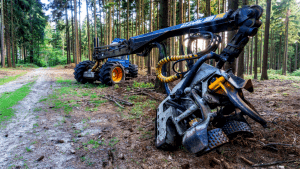Engineers who work with rubber products make trade-offs. For example, nitrile gaskets can resist high temperatures but can’t withstand sunlight. Neoprene gaskets can resist the sun’s ultraviolet rays but can’t match nitrile’s abrasion resistance at high temperatures. Both materials are oil resistant, but neoprene costs less. If abrasion resistance isn’t important, then neoprene gaskets may be the better choice.
Engineers also face trade-offs when comparing standard rubber parts vs. custom rubber parts. Standard parts are designed for a range of applications, but can they meet the requirements for your specific application? Also, because of the current supply chain crisis, it’s usually faster, easier, less expensive, and less risky to use standard parts than custom parts.
That’s bad news if you need a custom part, but can you use a standard part instead? There may be rubber products available with the dimensions, properties, and performance that you need. And separating what you need from what would be nice-to-have is always important. Let’s start with some basics and then consider design and development, manufacturing, inventory management, and service and support.
The Basics of Custom vs. Standard Rubber Parts
Standard parts follow a manufacturer’s regular naming or numbering convention and can be found in their catalog or on their website. They’re usually kept in stock by the manufacturer or its distributor and, increasingly, are available for sale on e-commerce sites like Amazon. Sometimes, these components are known as commercial standard parts, supplier standard parts, or commercial off-the-shelf (COTS) parts.
Custom parts may follow a manufacturer’s naming or numbering convention but aren’t part of their catalog or on their website. Unless you made special arrangements, quantities are not kept in stock, which results in longer lead times even when there aren’t supply chain disruptions. You may be able to use an on-line configurator to specify what you want to buy, but it’s easier to order standard components.
Design and Development
Engineers who use standard rubber parts can short product development cycles, reduce costs, and speed time-to-market. In part, that’s because standard products often have 3D CAD files that you can request and then add to your design. You’ll save time since you won’t have to draw the part and, if you’ve used the item before, you probably won’t need to get approvals.
Every custom rubber part that’s added to an assembly takes time to draw – and some designs can be especially time-consuming. So, it’s important to ask yourself if designing a custom part is really worth it. Then, once the part is drawn, there are approvals to wait for and testing and documentation that’s required. By contrast, standard parts have already been tested and usually have spec sheets.
Manufacturing
Standard rubber parts also offer benefits in terms of manufacturing. You’ll reduce the risk of problems with quality and consistency since the manufacturer produces the part regularly and across repeated runs. That’s not always the case with custom parts that are produced infrequently and by personnel who may no longer work for the company when it’s time to reorder.
Standard parts also help you to reduce tooling costs. Consider the difference between a custom molded part and a standard rubber extrusion. The custom molded part requires new tooling that you wait for and pay for. If your order quantities are low, the return on investment (ROI) is long. By contrast, the standard rubber extrusion is produced with an existing die and in higher volumes for a quicker ROI.
Inventory Management
Using standard parts also minimizes the risk of stock-outs that could cause your operations to come to a grinding halt. Most suppliers don’t keep custom parts in inventory, but they do stock standard parts according to safety factors and other practices. Yet, there’s a flip side to availability. With standard parts, there’s a carrying cost that the supplier passes along in order to keep sufficient quantities on hand.
You could stock everything you need in your own facility, but then you’d incur your own costs for things like heating, cooling, lighting, and heating. There are other considerations as well. Could the standard parts you order work with different assemblies? For example, if you manufacture several types of heavy trucks, you might be able to design doors on different vehicles that use the same extrusion for the seal.
Service and Support
The use of standard parts also enables you to give and receive better service and support. When you order products, the standard part number that you provide is one the supplier will recognize. That might not be the case with a custom part, which can lead to a time-consuming search for documentation and revision histories. If your own customer needs a replacement, you’ll also be able to send a part more readily.
In general, standard rubber parts are faster and easier to produce, which results in shorter lead times. Because they don’t require special tooling, these parts may also cost less. Partnering with Elasto Proxy gives you the flexibility to store either standard or custom rubber parts in our warehouses, but we invite you to think carefully about whether you need a custom part – and if you can afford to wait for one.
To discuss your application, contact us.









